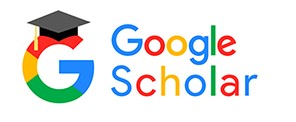A Granger Causality Analysis of the influence of debt service on the economy
Keywords:
debt service, granger causality, GDP, inflation, unemployment rateAbstract
In the 1970s, it was during this period that the Marcos administration focused on fulfilling development projects, funded through concessional loans. These loans had been extended on terms substantially more generous than market loans, concessional either through interest rates below those available on the market or by grace periods, or a combination of these. Hence, with the bloated ability of the country until the present time of his son, Ferdinand Marcos Jr., and those long-term debts, debt service has become a fundamental peg in managing the debt hole of the economy. The researchers seek to determine and investigate the influence of debt service on the Philippine economy considering this important economic variable through real exchange rates, inflation, gross domestic product, and foreign investments. In addition, the researchers will use Granger causality analysis as it detects the direct exchange of information between debt service and GDP while testing the relationship of the other economic variables such as real exchange rates, inflation, and foreign investments to the debt service of the government. Moreover, the result of the analysis shows greater implications of all the selected economic variables to the debt service in the economy; but, of all the given selected economic variables, gross domestic product shows potency in impacting the debt service to the economy. Being able to see this relationship would help policymakers become more aware of implications when the debt to GDP ratio crosses the ideal threshold when there is no strong economic backup plan. The null hypothesis indicates that total debt payment or total debt service does not granger cause the nominal gross domestic product. The researchers also identified optimal lags and thresholds for debt ceilings which contribute to the analysis. The use of nominal gross domestic product (GDP) instead of real GDP was also highlighted in the paper.
References
Alegado, Siegfrid (2022). Philippines’ debt ratio widens as pandemic rages., www.bloomberg.com, Asia Edition.
Buchanan, James M. (1999). Public principles of public debt. liberty fund, inc., 8335 Allison Pointe Trail, Suite 300 Indianapolis, IN.
Dey, S.R. and Tareque, M. (2020), "External debt and growth: role of stable macroeconomic policies", Journal of Economics, Finance and Administrative Science, Vol. 25 No. 50, pp. 185-204. https://doi.org/10.1108/JEFAS-05-2019-0069 DOI: https://doi.org/10.1108/JEFAS-05-2019-0069
Shari Spiegel and Oliver Schwank (2022). “UN DESA policy brief no. 134: The great finance Divide. https://www.un.org/development/desa/dpad/publication/un-desa-policy-brief-no-134-the-great-finance-divide/.
The Measurement of External Debt: Definition and Core Accounting Principles via https://www.imf.org/external/pubs/ft/eds/Eng /Guide/file2.pdf.
Philippon, Thomas (2009) The Macroeconomics of Debt Overhang” New York University https://www.imf.org/external/np/res/seminars /2009/arc/pdf/Philippon.pdf
Grennes, T., Caner, M., and Koehller-Geib, F.World Bank.(2013) "Finding the Tipping Point - When Sovereign Debt Turns Bad."
Joao, Tovar, and Medas, Paulo. Economic Growth After Debt Surges (2022), IMF.
IMF.https://www.imf.org/en/Publications/WP/Issues/2022/07/29/Economic-Growth-After-Debt-Surges-521357 DOI: https://doi.org/10.5089/9798400217227.001
- PDF | 196
- Abstract Views | 296
Published
How to Cite
Issue
Section
Copyright (c) 2023 Edilberto Viray, Ma. Jesusa Bato

This work is licensed under a Creative Commons Attribution-NonCommercial-NoDerivatives 4.0 International License.











